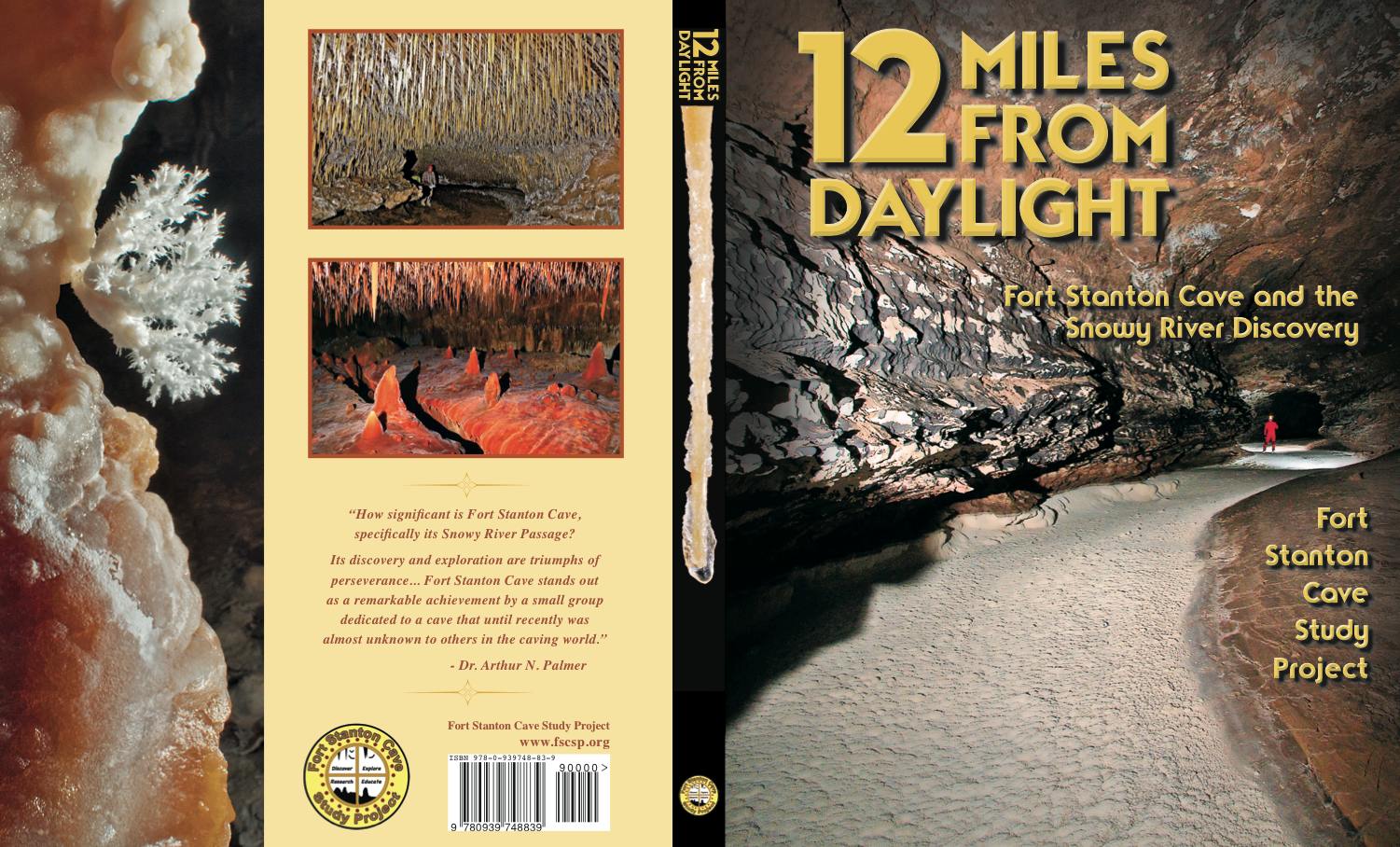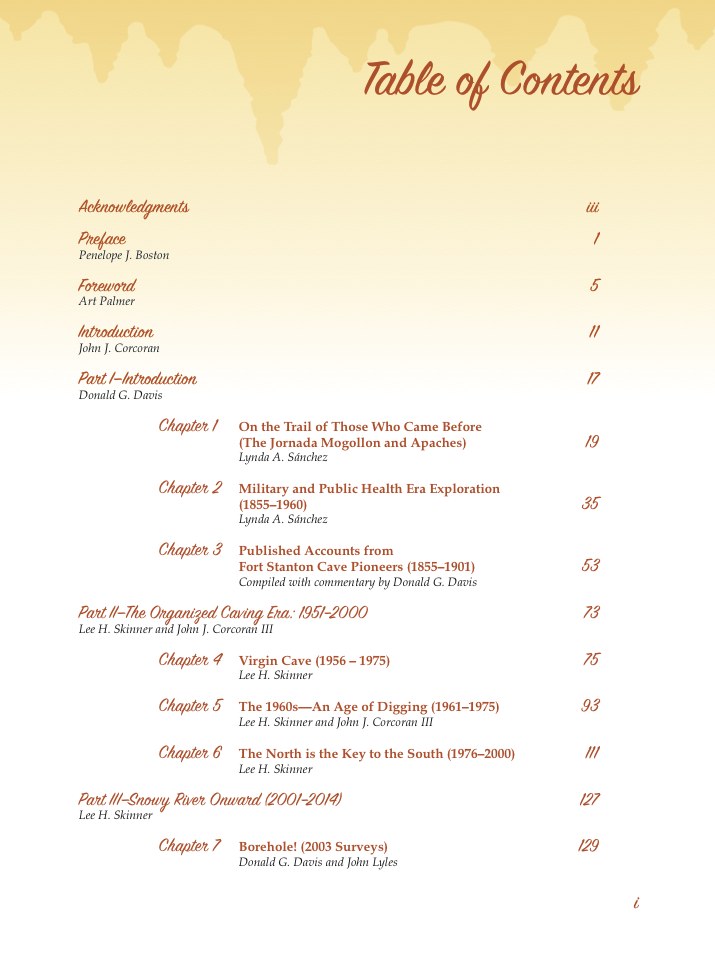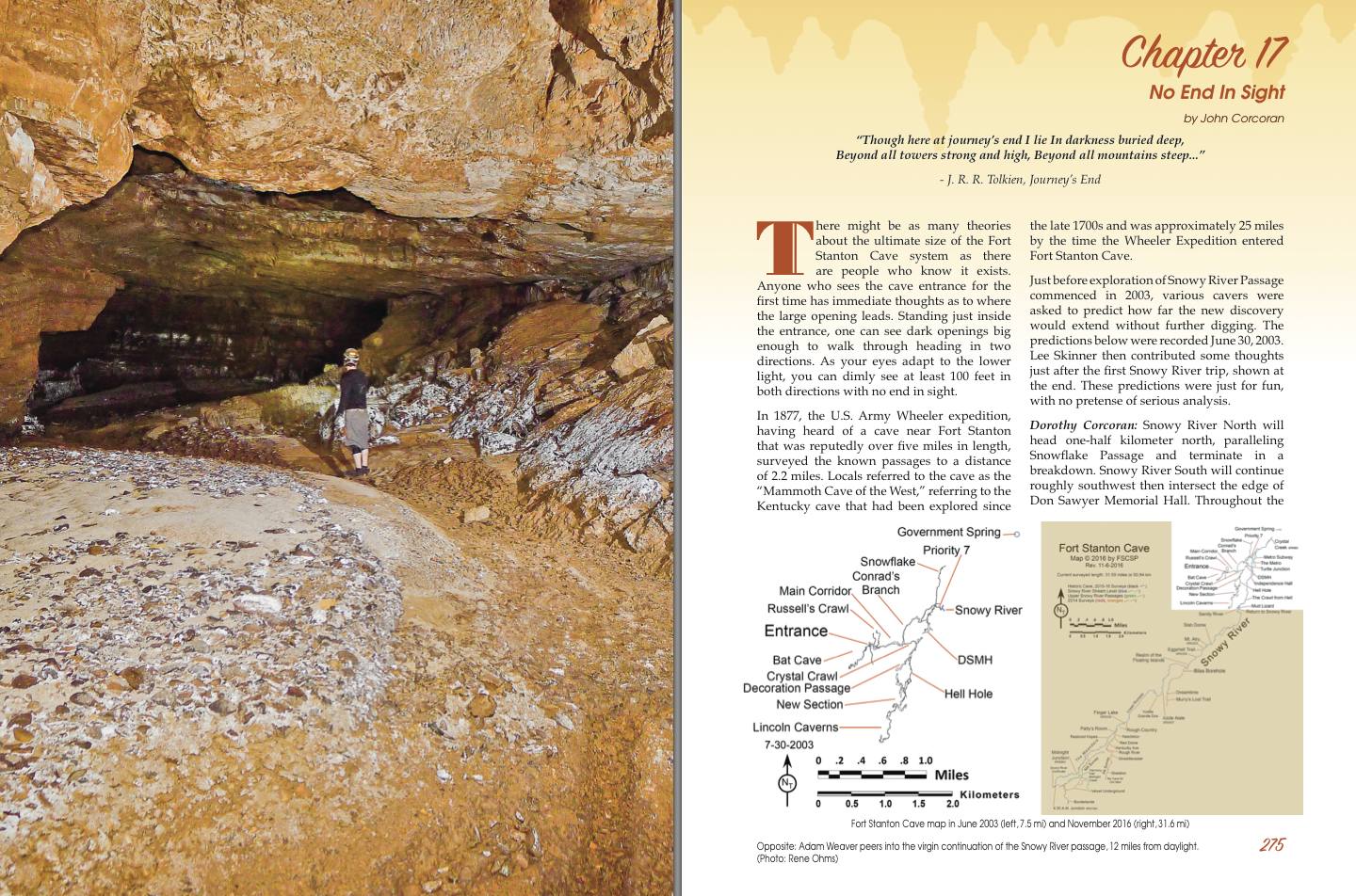| |
|
(Click on the pages below to see enlarged image. Return to this page by pressing your browser back arrow.) |
We are very proud to announce the publication of a large format book about the documentation, exploration, mapping and science of Fort Stanton Cave, in Lincoln County New Mexico. The 310 page book includes numerous maps, a large fold-out map of the entire cave and over 350 full color photographs, diagrams and area maps.
The book will be available first to our team of cavers and associates attending the 2017 NSS Convention in Rio Rancho, New Mexico in June. Soon afterward our world-wide caver friends attending the ICS in Australia will have a chance to place an order for books.
|
|
|
In New Mexico, Lincoln County residents and visitors will be able to locate copies of the book by contacting Lynda Sánchez after July 4th, 2017.
 Lynda is taking orders now and can be contacted HERE. Lynda is taking orders now and can be contacted HERE.
We have arranged the book in four parts consisting of 17 chapters.
|
|
|
|
|
Thanks to our many volunteers and contributors, we are presenting a very unique book on the past 160 years of history of this unique cave.
During the construction of the access portal the majority of the Southwestern Region of the National Speleological Society contributed many volunteer hours to facilitate the access we have to the new Snowy River Section of the cave.
|
|
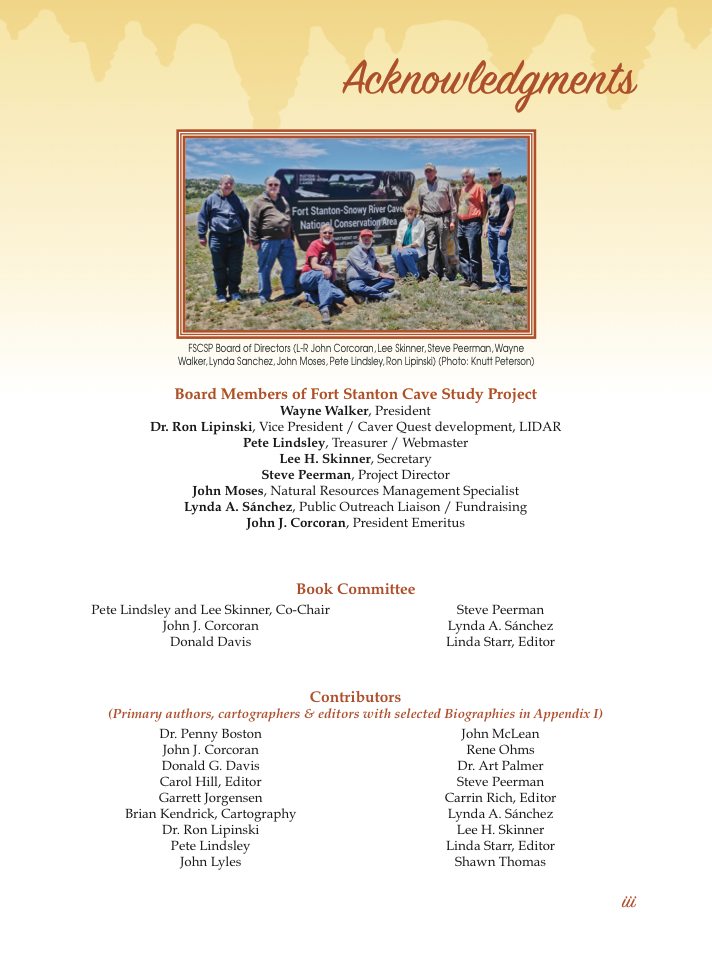 |
|
 |
|
|
|
|
|
|
|
|
The story begins with the Native American people who made their home in the lands surrounding Sierra Blanca, a snow-capped mountain in the winter, and whose melting waters was a key part to the formation of miles of walking passages. |
|
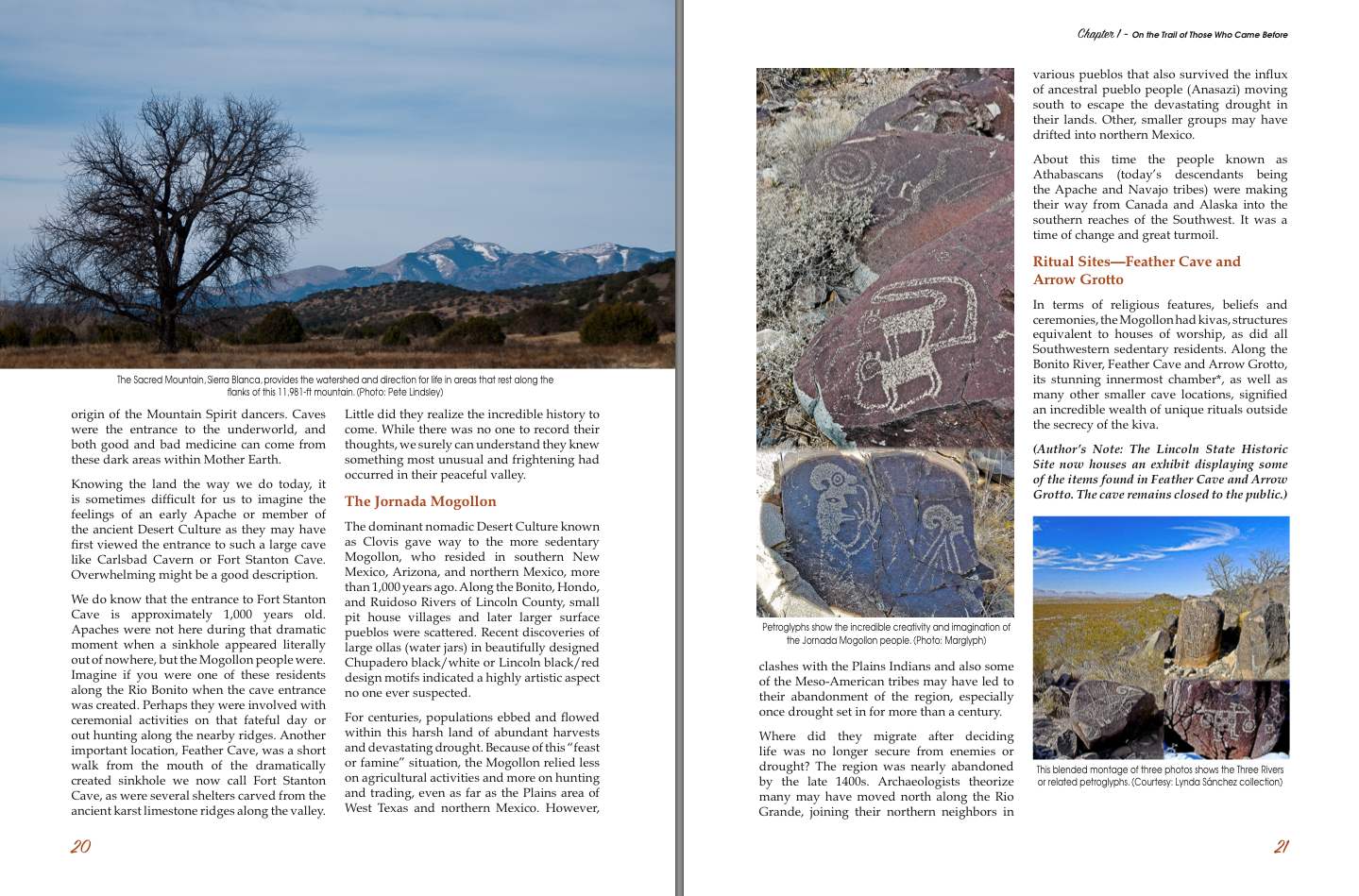 |
During the mid 1800s and early 1900s there were many explorers that ventured into the darkness at the bottom of a giant sinkhole. During our historical research on the early explorers we found new records of their exploits, some of which we have reprinted in Chapter 3. |
|
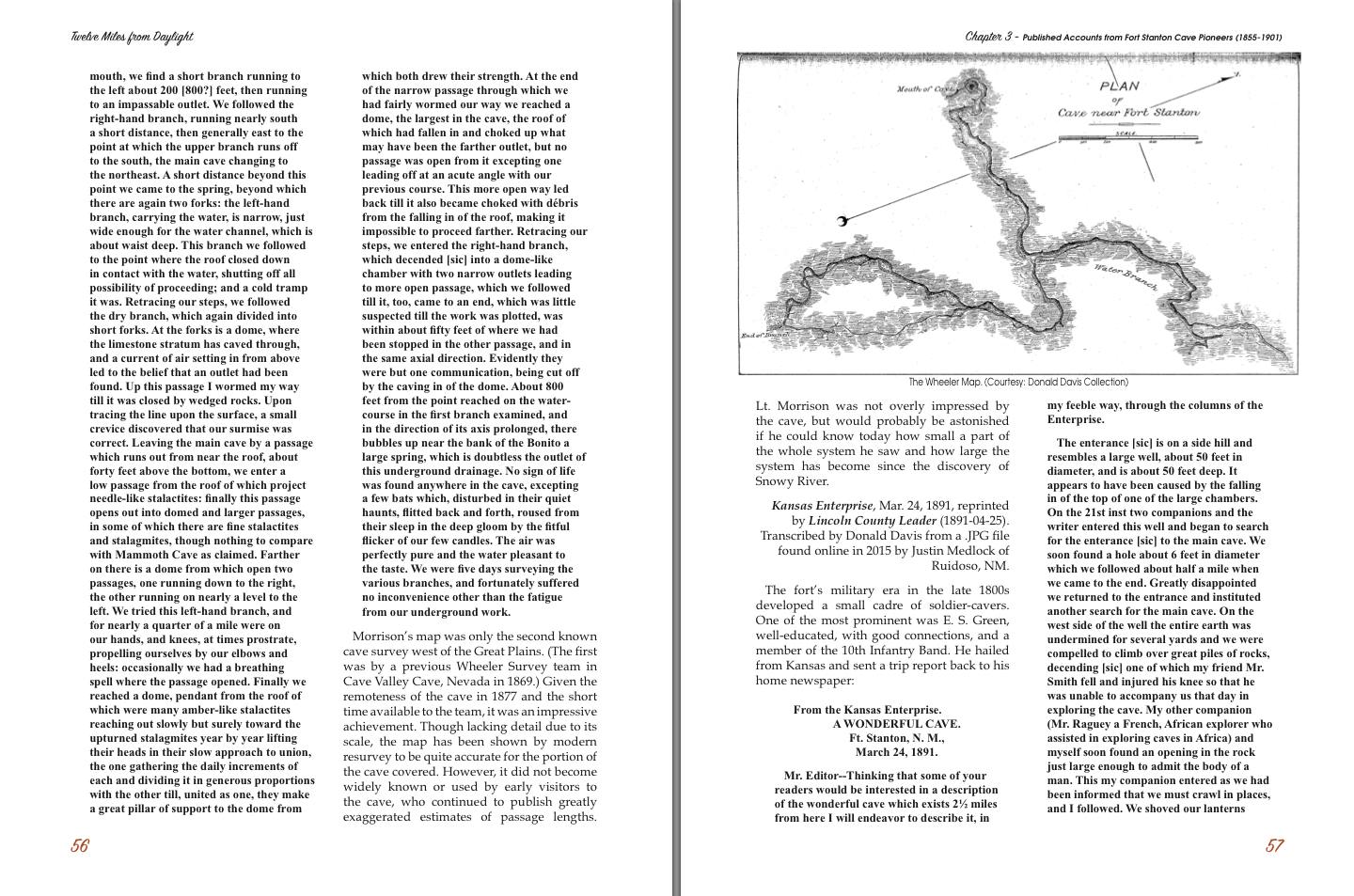 |
Modern cavers began their explorations in the 1950s and 1960s, discovering new sections of the cave with beautiful velvet flowstone formations that lay beyond blowing breakdown that was passed by digging and tight crawls. |
|
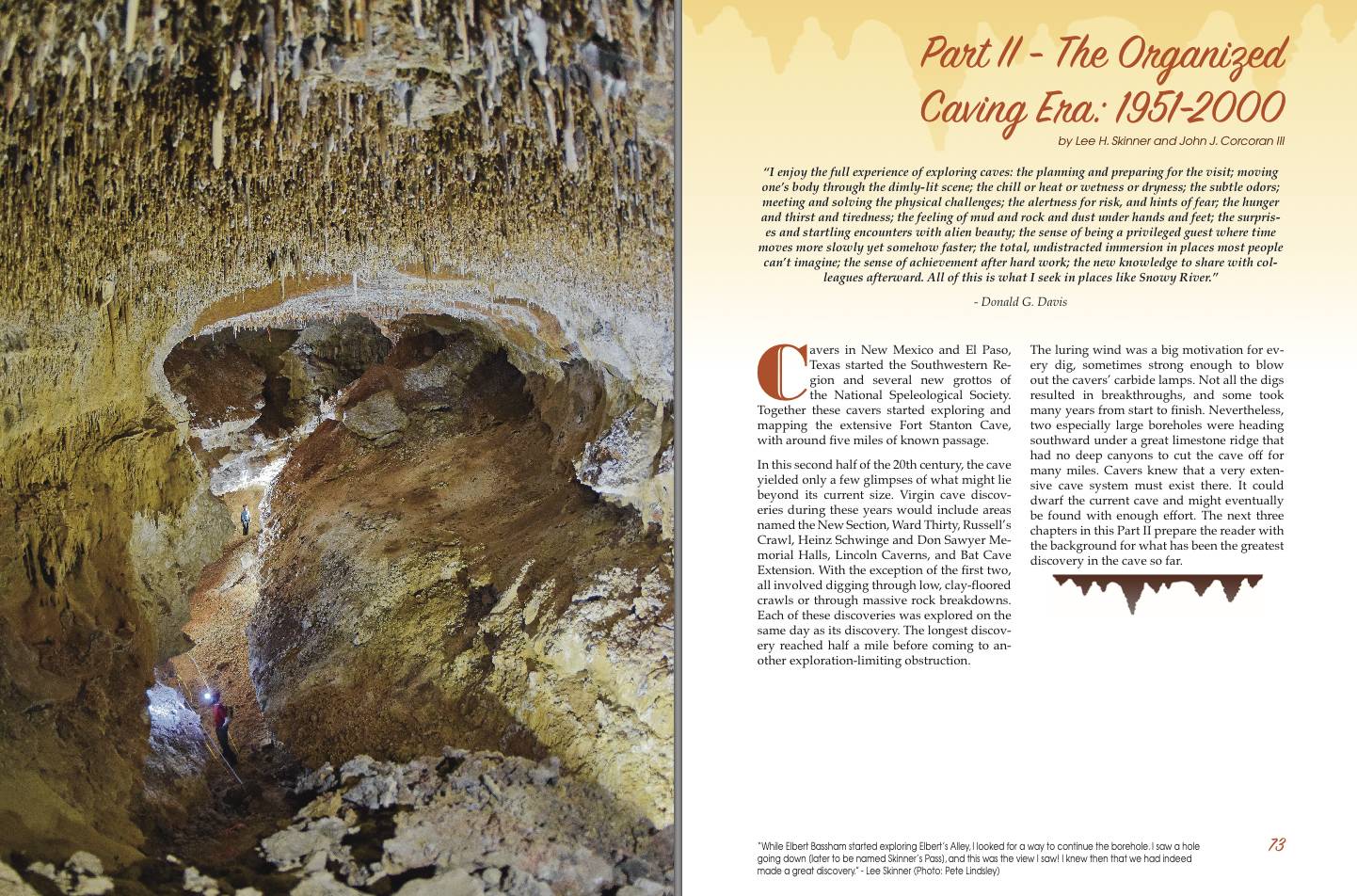 |
Today along the historic sections of the cave one can spot signatures of explorers that came from near by Fort Stanton, discussed in chapter 2. |
|
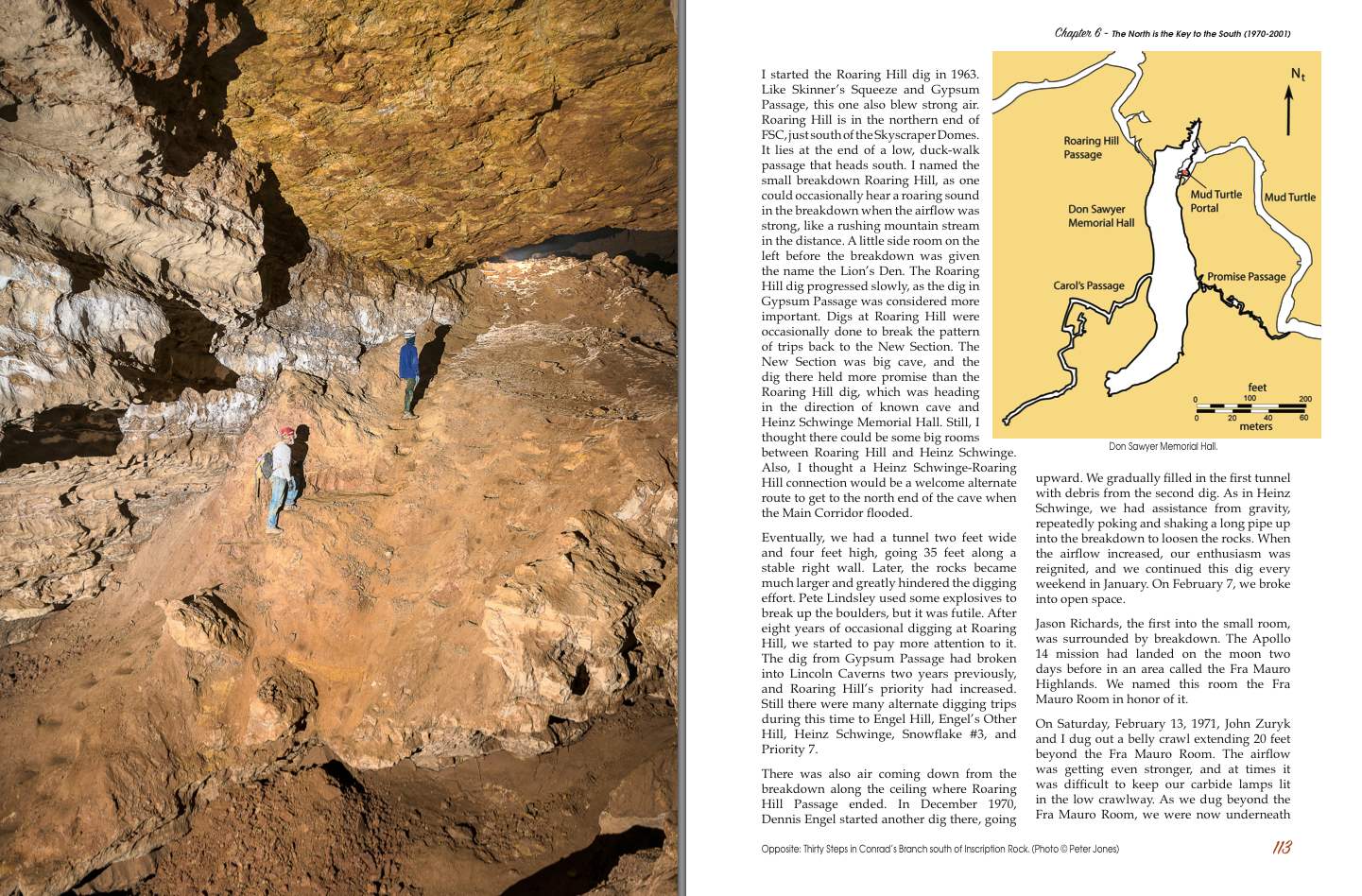 |
A major breakthrough past a difficult dig led to the now famous Snowy River. The original access was replaced by a 44 foot deep access portal that allowed easier and safer visits to Turtle Junction. This important junction is now the only access to the passages connecting to Snowy River, which has been found to flow much of the time during wet years. |
|
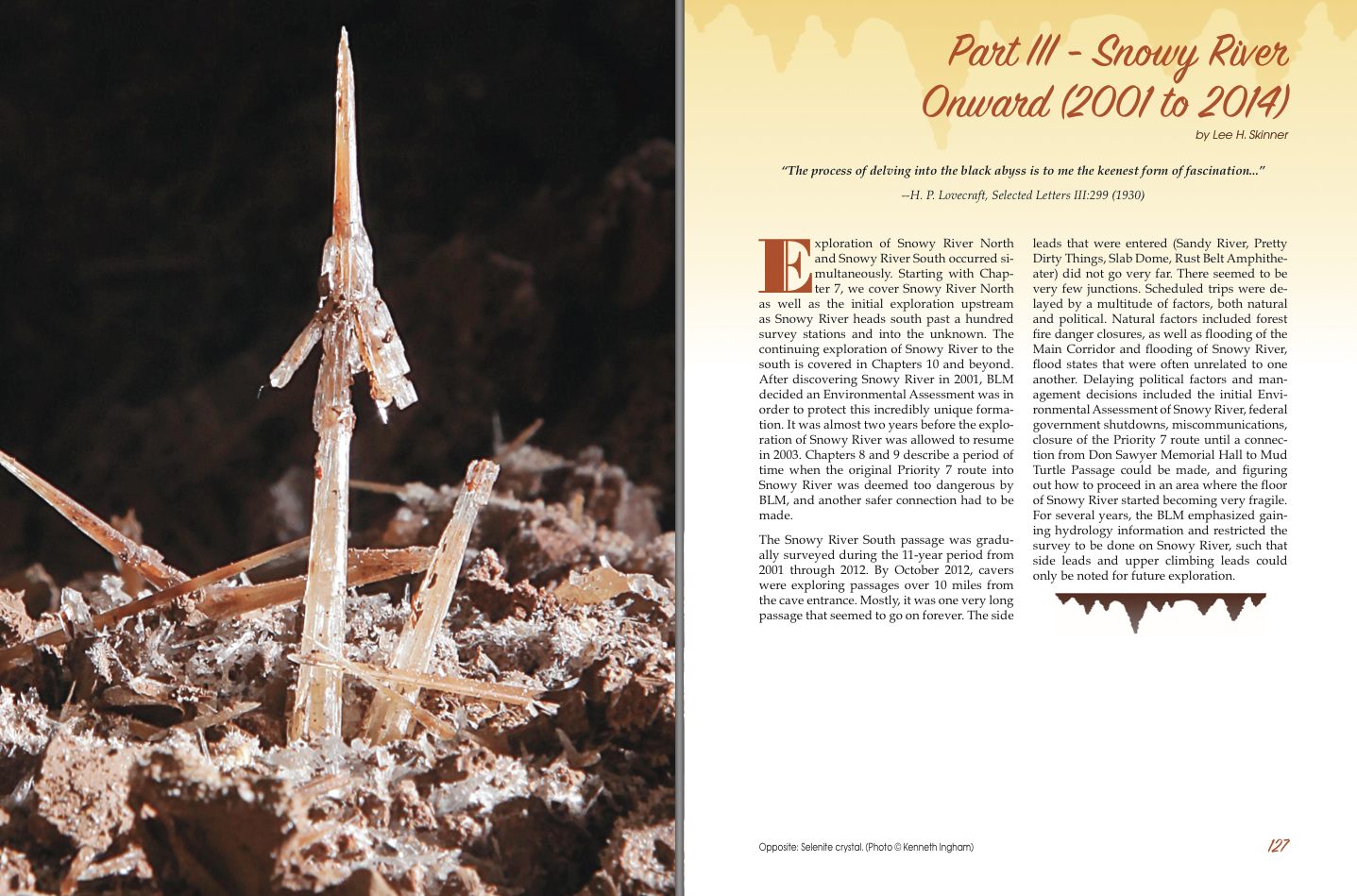 |
Cave radio location techniques have been used to verify key points of the survey, which has combined precision survey techniques, standard Suunto compass surveys, DistoX2 surveys, and now LIDAR techniques which support a computer simulation program for several portions of the cave. This program, called Caver Quest, allows cavers to visit sections of the cave, and is available via a link at the top of this page. |
|
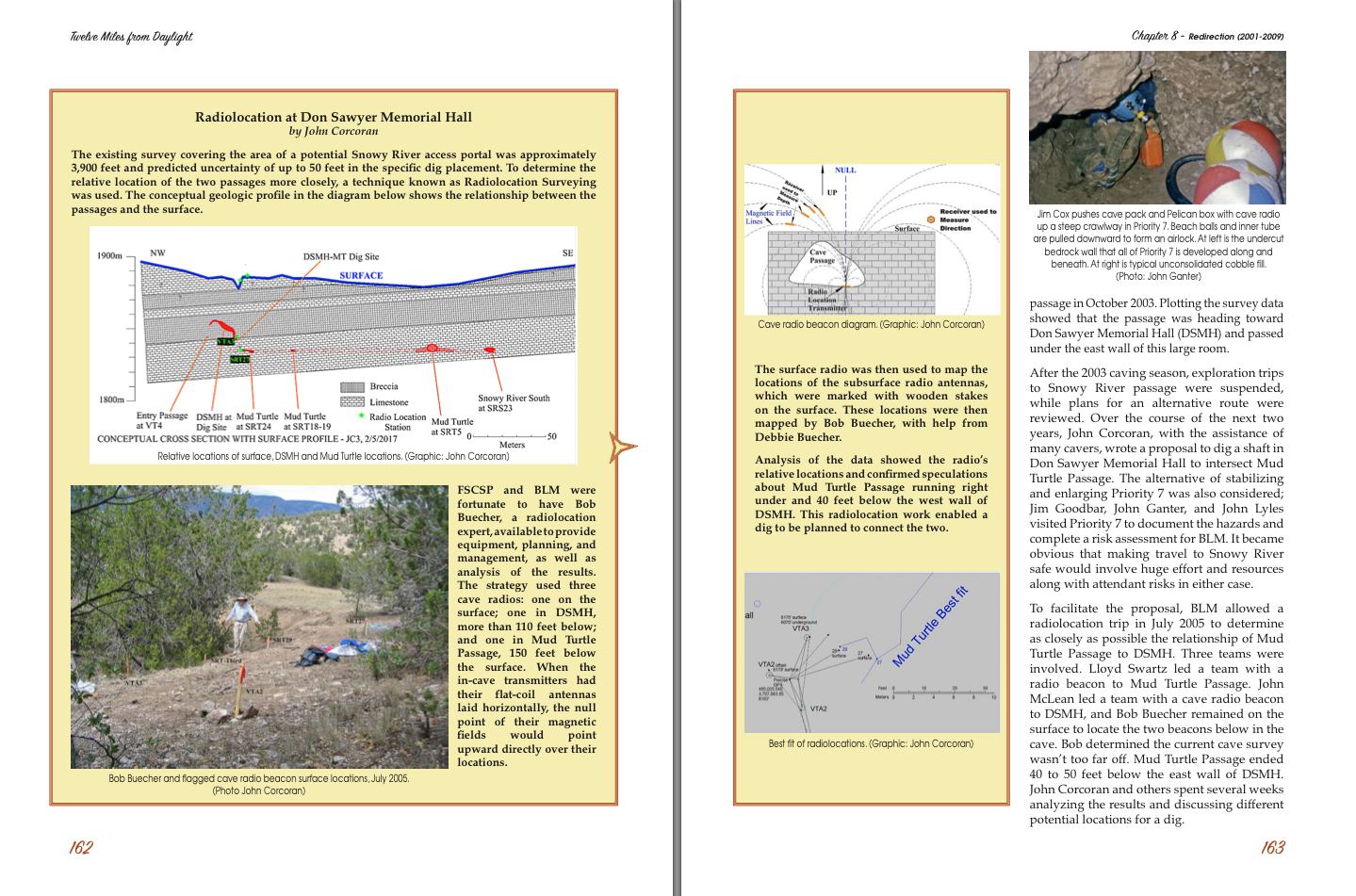 |
Many miles upstream from Turtle Junction another junction of passages was discovered. Midnight Junction is currently the only area used for 2-3 day camps, almost 11 miles from the only entrance to Fort Stanton Cave. |
|
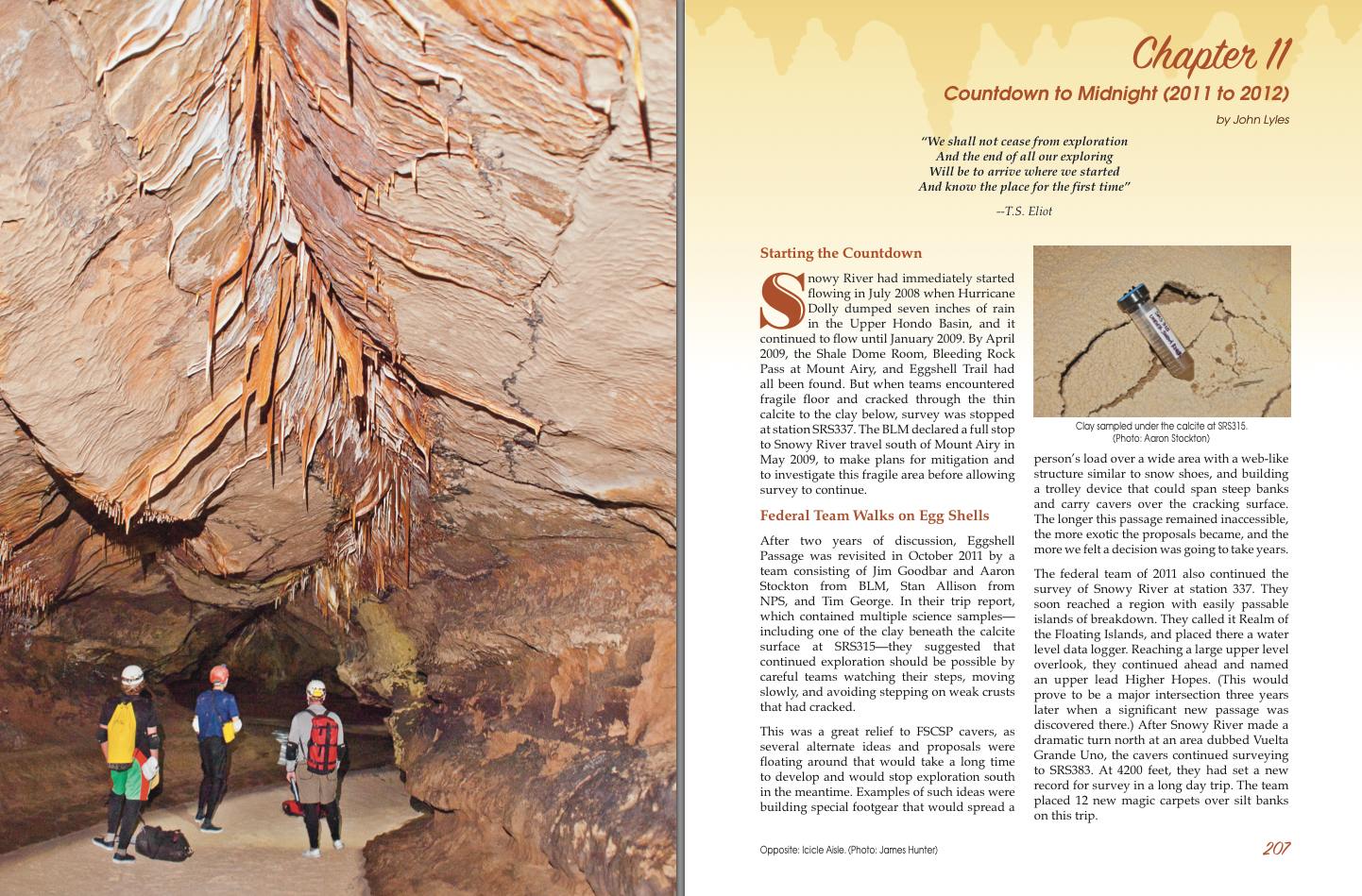 |
Extensive documentation of the cave during the surveys has provided over 50,000 digital images of the cave, the best of which have been featured in over 350 photos in this book. |
|
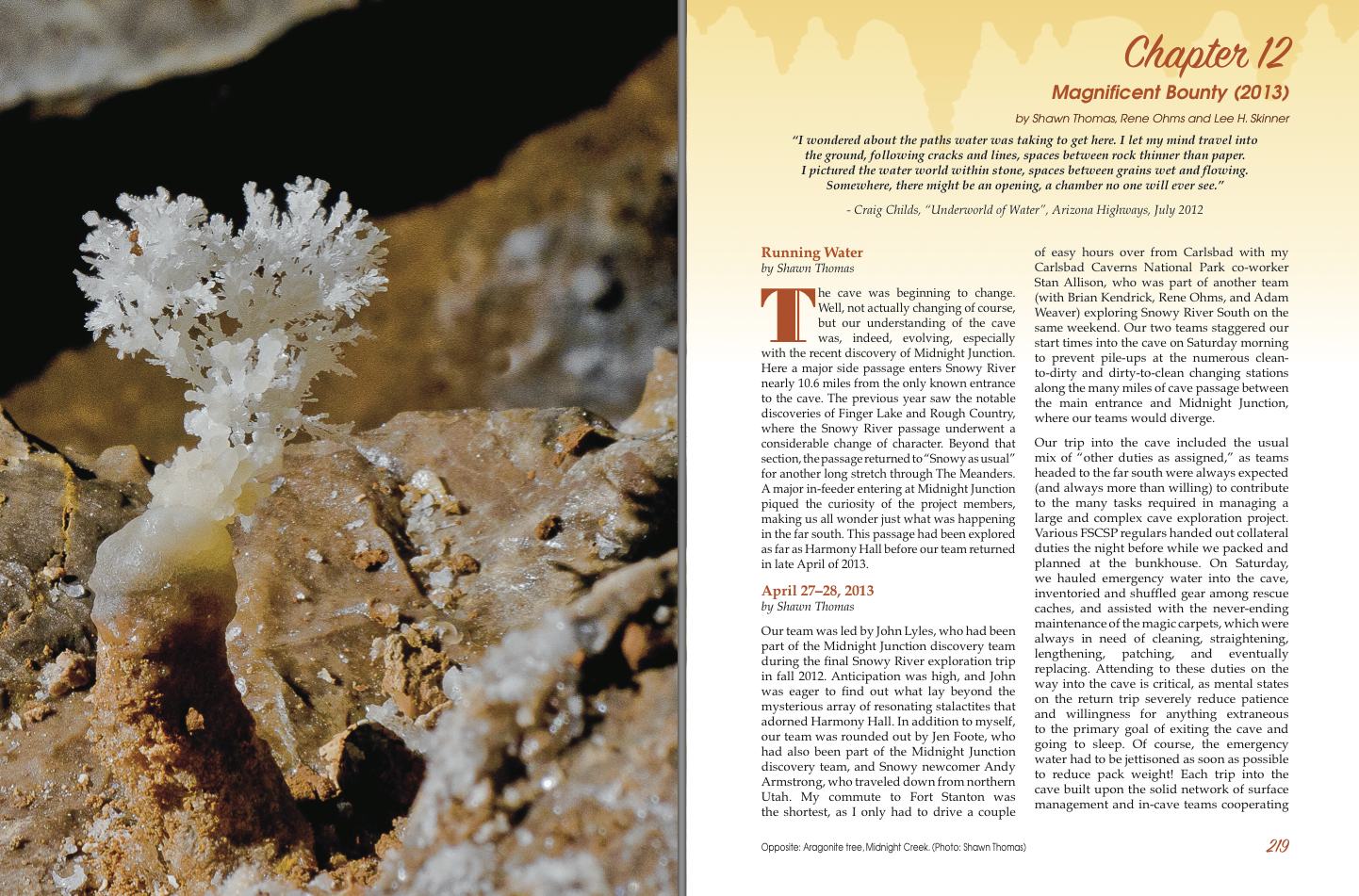 |
Going well beyond a "pretty picture" book, you will read about virgin cave discovery and exploration over eight hours travel time from the entrance. |
|
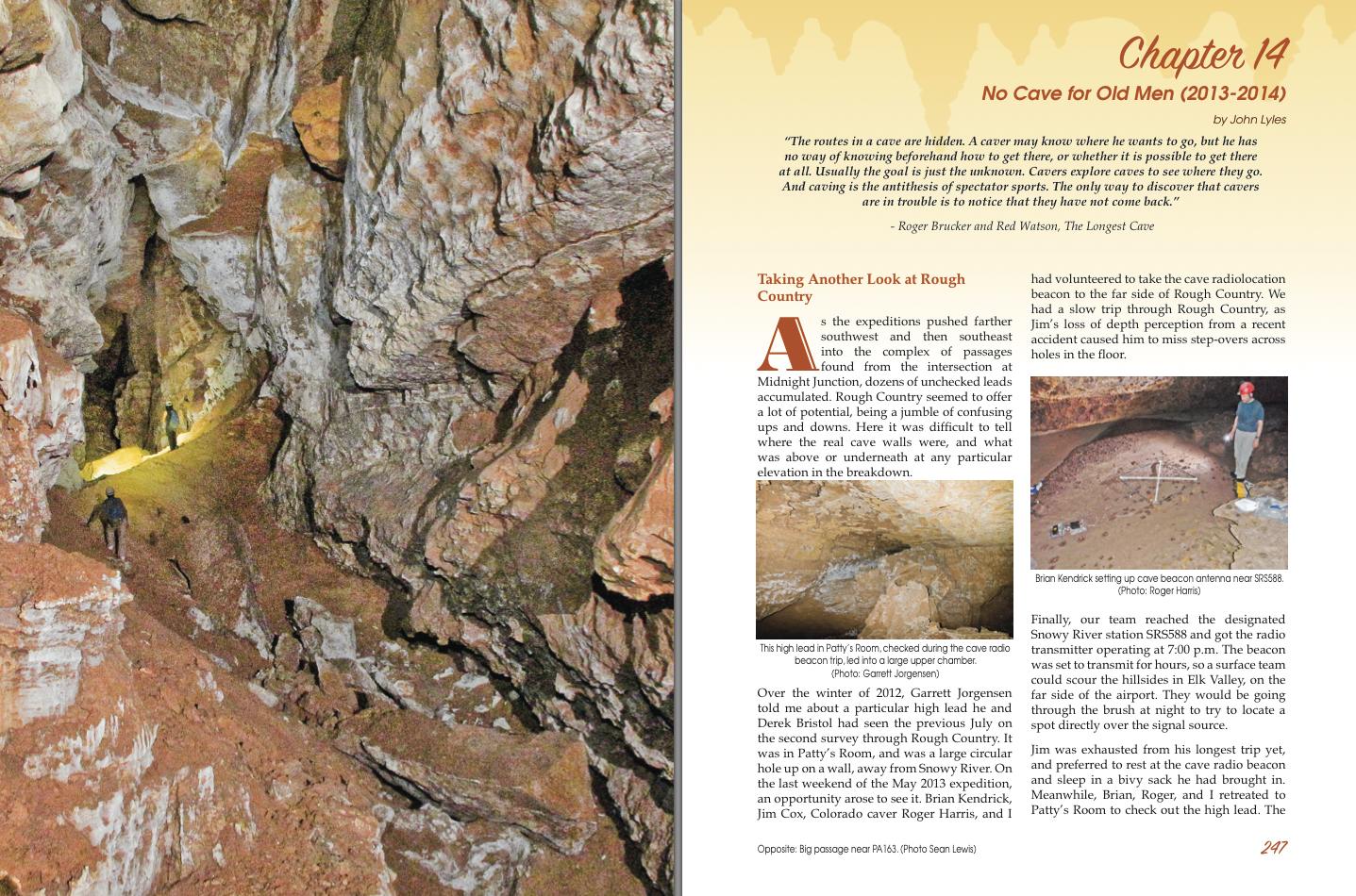 |
Gypsum, aragonite and calcite formations add to the beauty of these areas seen by less than a hundred strong cavers. Velvet flowstone and unique fossils are found in sections near Midnight Junction. |
|
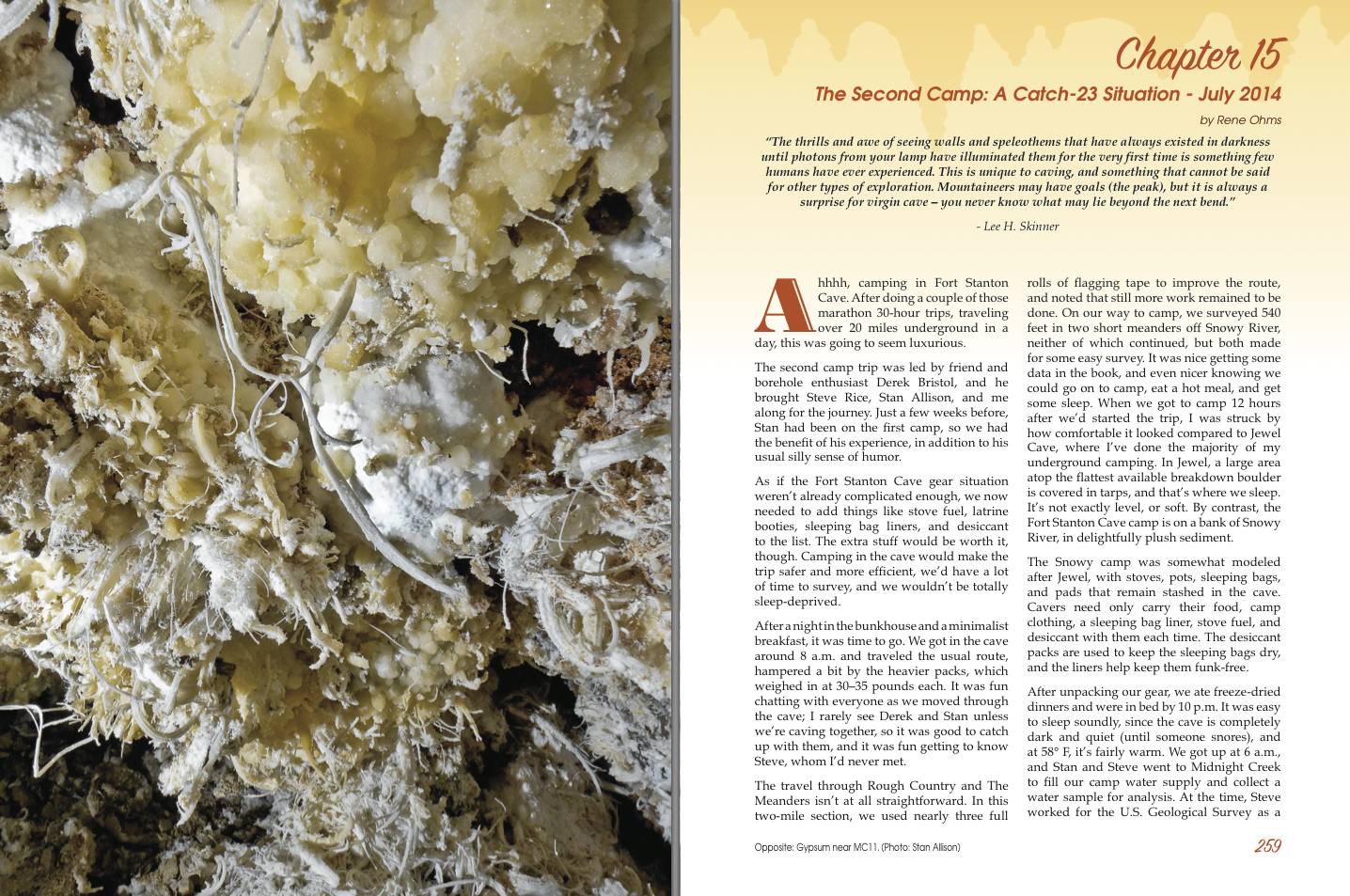 |
In 2014 Snowy River began flowing again, after several years of dry seasons that allowed the deep exploration. This time it has flowed for three years as survey work continued in the historic sections of the cave. It also allowed digital photography of portions of the historic sections of the cave which is featured in the book. Once the Snowy River Passage dries up and travel on the delicate surface can resume, numerous walking passages await the first lights of man. |
|
|
![]()



